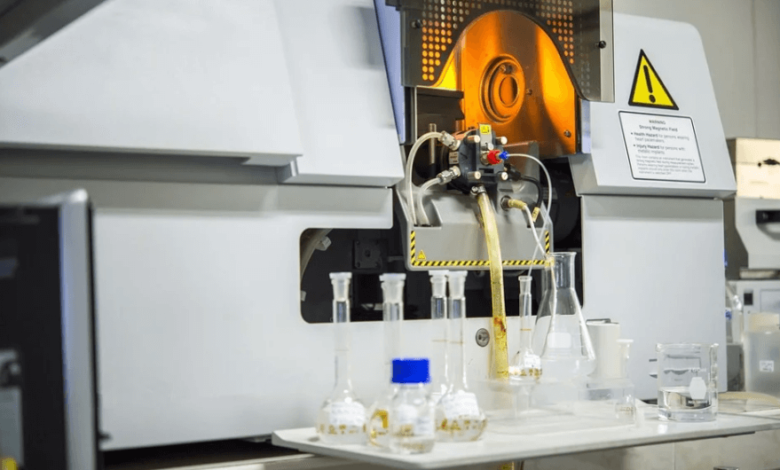The icp spectrometer: A Game-Changer in Elemental Analysis for Modern Laboratories

In the world of analytical chemistry, accuracy, efficiency, and reliability are essential—especially when testing samples for trace metals and other elements. One of the most advanced and widely adopted tools to meet these demands is the icp spectrometer, an instrument that has revolutionized multi-element analysis across various industries.
From environmental testing to pharmaceutical quality control, the icp spectrometer plays a crucial role in helping scientists and researchers produce fast, reproducible, and precise data. This article explores what makes this instrument indispensable, how it works, and what considerations are important when selecting one for your lab.
What is an ICP Spectrometer?
An CP spectrometer or Inductively Coupled Plasma Spectrometer, is an analytical device used to determine the elemental composition of liquid samples. It uses an extremely hot plasma source—generated by argon gas and radiofrequency energy—to excite atoms and ions within the sample.
When these excited atoms return to their ground state, they emit light at characteristic wavelengths. The instrument measures the intensity of this light, which corresponds to the concentration of specific elements within the sample.
There are two primary types of icp spectrometers:
- ICP-OES (Optical Emission Spectrometry): Detects the light emitted by atoms in the plasma.
- ICP-MS (Mass Spectrometry): Measures ions based on their mass-to-charge ratio and is known for ultra-trace level sensitivity.
See also: What Is Geo Grid: A Guide to Soil Stabilization Technology
How Does an ICP Spectrometer Work?
The operation of an icp spectrometer involves several key stages:
- Sample Introduction: The liquid sample is converted into an aerosol using a nebulizer. This aerosol is carried into the plasma.
- Plasma Generation: A powerful RF generator energizes argon gas, producing plasma temperatures exceeding 7,000 K.
- Excitation and Emission: The atoms in the sample are excited in the plasma and emit light (in ICP-OES) or form ions (in ICP-MS).
- Optical or Mass Detection: The emitted light or produced ions are separated based on wavelength or mass, then measured by detectors.
- Data Processing: The software converts the measured signals into elemental concentrations using calibration standards.
Key Benefits of Using an ICP Spectrometer
The icp spectrometer offers numerous advantages that make it a preferred choice over traditional analytical techniques like AAS (Atomic Absorption Spectrometry):
✅ Multi-Element Detection
An icp spectrometer can simultaneously analyze multiple elements, saving time and increasing sample throughput.
✅ High Sensitivity
Especially in ICP-MS, detection levels can reach parts-per-trillion (ppt), making the instrument ideal for trace element analysis.
✅ Speed and Efficiency
Each analysis typically takes less than 2 minutes, with automated samplers handling dozens or even hundreds of samples per day.
✅ Wide Dynamic Range
The instrument can analyze both high and low concentrations of elements within a single run, which is useful for diverse sample matrices.
✅ Low Interference
Plasma conditions reduce many types of chemical interference, ensuring more accurate and reproducible data.
Applications of the ICP Spectrometer Across Industries
Due to its versatility, the icp spectrometer is used across a range of industries, including:
🌍 Environmental Analysis
Used to monitor heavy metals and other contaminants in water, soil, and air to comply with EPA and ISO standards.
💊 Pharmaceutical Industry
Essential for elemental impurity testing in compliance with ICH Q3D guidelines, ensuring drug safety and quality.
⚙️ Metallurgy and Materials Science
Analyzes composition of metals, alloys, and industrial materials to meet product specifications and performance requirements.
🌾 Food and Agriculture
Measures trace elements and contaminants in food, fertilizers, and soil to ensure safety and nutritional quality.
🔬 Research and Academia
Enables geochemical, biochemical, and nanotechnology research by providing accurate elemental data.
Choosing the Right ICP Spectrometer for Your Lab
When shopping for an icp spectrometer, there are several critical factors to evaluate:
1. Type of Spectrometer Needed
Choose between ICP-OES for general use and ICP-MS for ultra-trace analysis. ICP-MS offers higher sensitivity but comes at a higher cost.
2. Sample Volume and Throughput
If you process many samples per day, ensure the system supports autosamplers and rapid analysis cycles.
3. Software and Integration
Advanced software can offer automated calibration, interference correction, and easy report generation. Ensure compatibility with your lab’s LIMS.
4. Maintenance and Support
Select vendors that offer strong after-sales service, readily available spare parts, and regular software updates.
5. Budget Considerations
Prices can range from $30,000 for entry-level ICP-OES units to over $250,000 for high-end ICP-MS systems. Consider total cost of ownership including argon gas, consumables, and service.
Real-World Example: A Lab’s Perspective
“After years of using AAS, switching to an icp spectrometer transformed our lab operations. We’re able to analyze 20+ elements per sample in minutes, and the data quality is exceptional.”
— Laboratory Manager, Environmental Testing Facility
“We invested in an ICP-MS system for our pharmaceutical plant. Though it was costly, it helped us meet international compliance standards and dramatically improved our quality assurance processes.”
— Head of Quality, Pharmaceutical Company
Leading ICP Spectrometer Brands to Consider
Several reputable manufacturers dominate the ICP market, each offering different models for various applications:
| Brand | Notable Products | Specialties |
| Agilent | 5110 ICP-OES, 7900 ICP-MS | Automation, reliability |
| Thermo Fisher | iCAP series | Environmental and pharma applications |
| PerkinElmer | Avio 550 Max, NexION series | Compact design, high performance |
| Shimadzu | ICPE-9800 series | Easy operation and robust software |
| Drawell | Budget-friendly ICP-OES systems | Cost-effective for small labs |
Maintenance Tips for Prolonged Performance
To keep your icp spectrometer running efficiently:
- Regularly clean the nebulizer and spray chamber.
- Monitor and replace torch parts and cones as needed.
- Calibrate with certified standards regularly.
- Check argon gas purity and pressure settings.
- Perform software backups and update firmware when available.
Following manufacturer-recommended maintenance schedules ensures minimal downtime and long-term data reliability.
Future Trends in ICP Technology
The icp spectrometer continues to evolve with technological advancements:
- Miniaturization: More compact, benchtop systems are entering the market.
- Smart Diagnostics: AI-based alerts for maintenance and troubleshooting.
- Cloud Integration: Remote monitoring and data sharing with cloud storage.
- Energy Efficiency: New systems use less argon and power.
These trends aim to make ICP technology more accessible, sustainable, and smarter than ever before.
Conclusion
The icp spectrometer is one of the most powerful and essential tools in modern analytical laboratories. Its unmatched speed, sensitivity, and ability to perform multi-element analysis make it invaluable across a wide range of scientific and industrial fields.
Whether you’re starting a new lab, upgrading outdated equipment, or scaling up operations, investing in a high-quality icp spectrometer will provide long-term benefits in data quality, productivity, and regulatory compliance.




